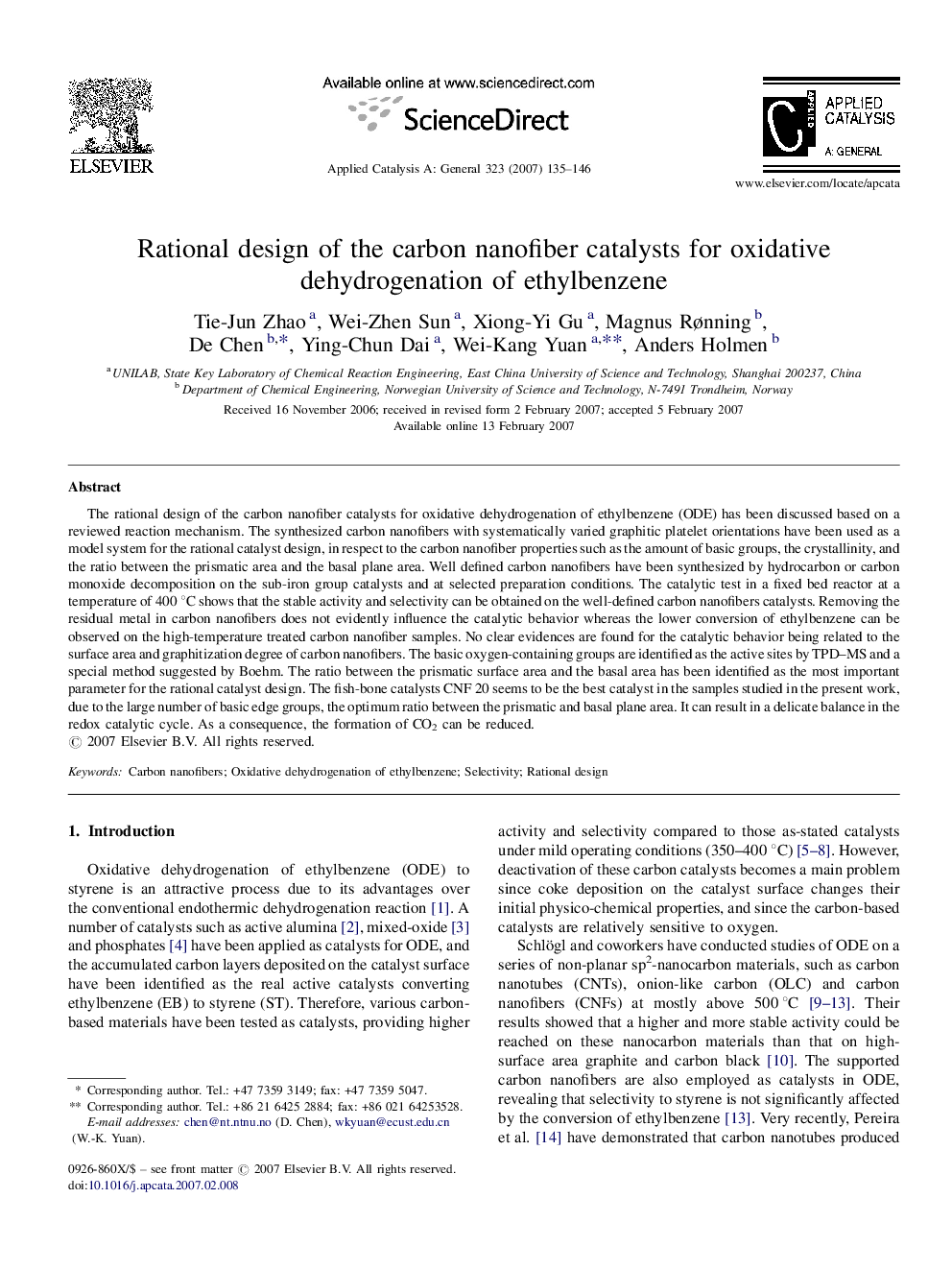| کد مقاله | کد نشریه | سال انتشار | مقاله انگلیسی | نسخه تمام متن |
|---|---|---|---|---|
| 43617 | 45979 | 2007 | 12 صفحه PDF | دانلود رایگان |

The rational design of the carbon nanofiber catalysts for oxidative dehydrogenation of ethylbenzene (ODE) has been discussed based on a reviewed reaction mechanism. The synthesized carbon nanofibers with systematically varied graphitic platelet orientations have been used as a model system for the rational catalyst design, in respect to the carbon nanofiber properties such as the amount of basic groups, the crystallinity, and the ratio between the prismatic area and the basal plane area. Well defined carbon nanofibers have been synthesized by hydrocarbon or carbon monoxide decomposition on the sub-iron group catalysts and at selected preparation conditions. The catalytic test in a fixed bed reactor at a temperature of 400 °C shows that the stable activity and selectivity can be obtained on the well-defined carbon nanofibers catalysts. Removing the residual metal in carbon nanofibers does not evidently influence the catalytic behavior whereas the lower conversion of ethylbenzene can be observed on the high-temperature treated carbon nanofiber samples. No clear evidences are found for the catalytic behavior being related to the surface area and graphitization degree of carbon nanofibers. The basic oxygen-containing groups are identified as the active sites by TPD–MS and a special method suggested by Boehm. The ratio between the prismatic surface area and the basal area has been identified as the most important parameter for the rational catalyst design. The fish-bone catalysts CNF 20 seems to be the best catalyst in the samples studied in the present work, due to the large number of basic edge groups, the optimum ratio between the prismatic and basal plane area. It can result in a delicate balance in the redox catalytic cycle. As a consequence, the formation of CO2 can be reduced.
Synthesized carbon nanofibers with different graphitic sheet orientations in respect to the fiber axis have been used as a platform for the rational catalyst design for oxidative dehydrogenation of ethylbenzene. Effects of the properties of carbon nanofibers such as the amount of basic groups, the crystallinity, and the ratio between the prismatic area and the basal plane area on the catalyst activity and selectivity have been addressed. Figure optionsDownload as PowerPoint slide
Journal: Applied Catalysis A: General - Volume 323, 30 April 2007, Pages 135–146